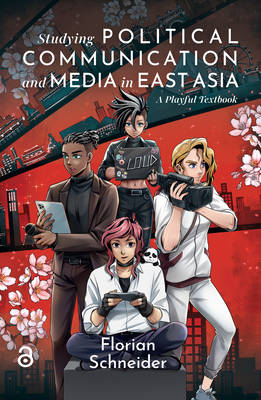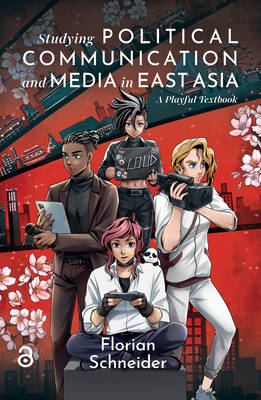
- Afhalen na 1 uur in een winkel met voorraad
- Gratis thuislevering in België vanaf € 30
- Ruim aanbod met 7 miljoen producten
- Afhalen na 1 uur in een winkel met voorraad
- Gratis thuislevering in België vanaf € 30
- Ruim aanbod met 7 miljoen producten
Zoeken
Studying Political Communication and Media in East Asia
A Playful Textbook
Florian Schneider
Paperback | Engels
€ 124,95
+ 249 punten
Omschrijving
Communication is at the heart of politics, and certainly in East Asia, where vibrant media systems and cultural industries connect with political processes that range from the democratic to autocratic. If we are to understand East Asian societies, and 21st-century politics more broadly, we need to take media and communication seriously. This textbook provides a flexible toolbox of methods and theories for studying political communication. Taking its examples and exercises from Japan, Korea, and the Chinese-speaking world, it walks readers through core issues, media contents, and communicative modes. Readers will learn how to systematically analyse the politics of media environments, written and spoken words, images and visual designs, moving image, space and spatial interactions, (video)games, and more. The chapters can be used individually or, optionally, as a playful 'gamified' course that offers learners a first-hand experience of how complex 'information societies' incentivise behaviour.
Specificaties
Betrokkenen
- Auteur(s):
- Uitgeverij:
Inhoud
- Aantal bladzijden:
- 432
- Taal:
- Engels
Eigenschappen
- Productcode (EAN):
- 9789048564453
- Verschijningsdatum:
- 24/04/2025
- Uitvoering:
- Paperback
- Formaat:
- Trade paperback (VS)
- Afmetingen:
- 157 mm x 236 mm
- Gewicht:
- 816 g

Alleen bij Standaard Boekhandel
+ 249 punten op je klantenkaart van Standaard Boekhandel
Beoordelingen
We publiceren alleen reviews die voldoen aan de voorwaarden voor reviews. Bekijk onze voorwaarden voor reviews.








